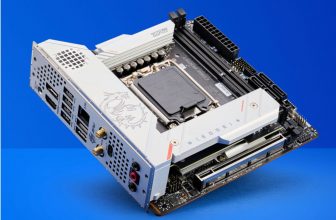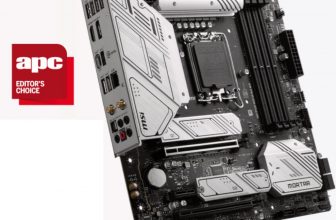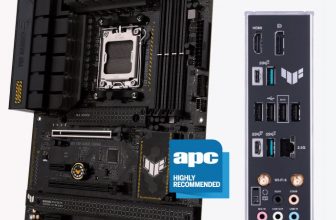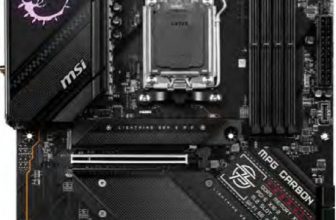GIGABYTE B660I AORUS PRO DDR4 Review
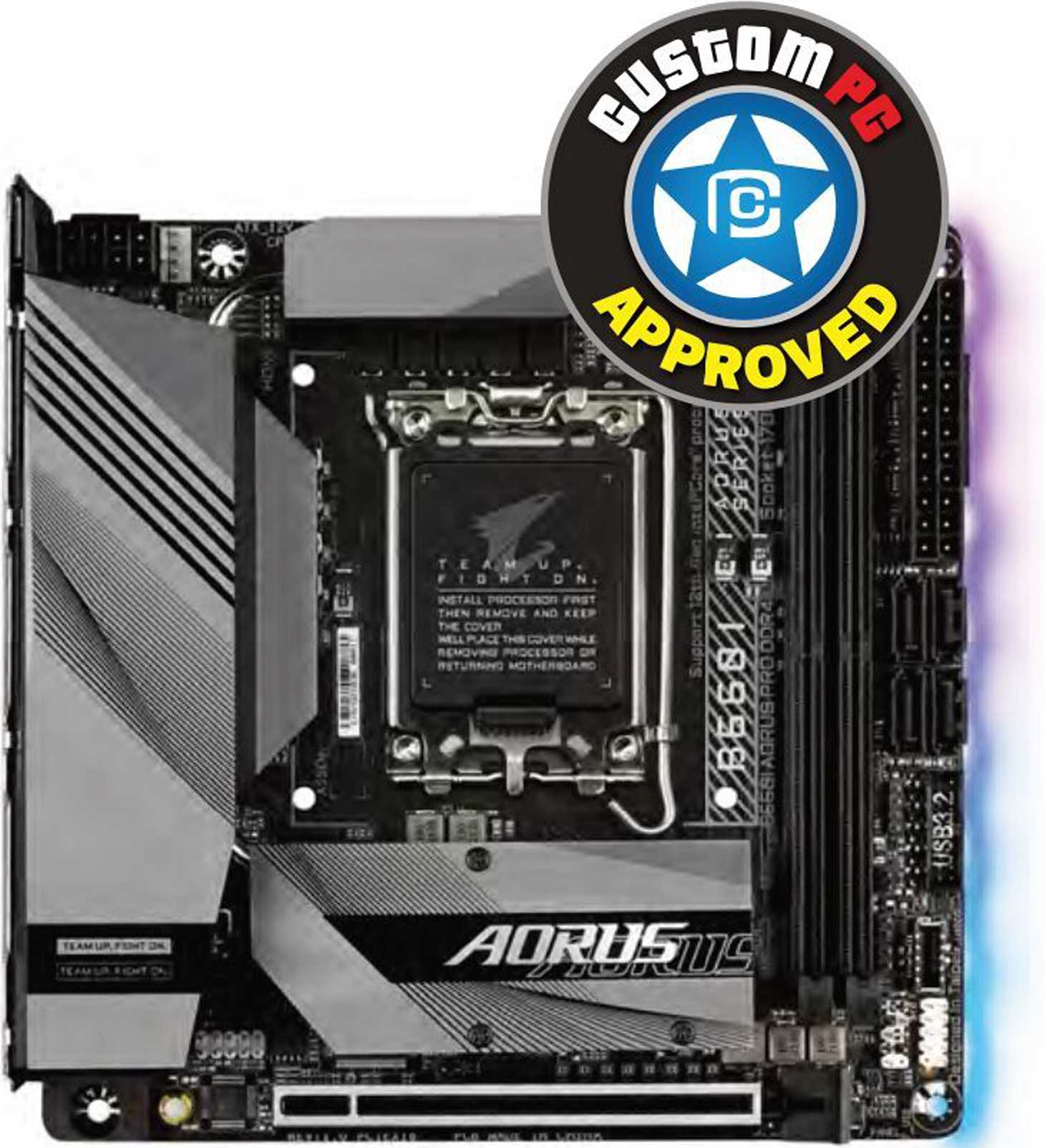
Overclocking Intel’s 12th-gen CPUs doesn’t always yield decent gains, particularly at the high end, so if you plan on running one at stock speed, you don’t need to fork out for a Z690 motherboard. The Gigabyte B660I Aorus Pro DDR4 costs significantly less than its Z690 siblings, and it uses DDR4 memory, cutting down the price of building a total system compared with using DDR5. Read our GIGABYTE B660I AORUS PRO DDR4 Review.
INTEL B660 MOTHERBOARD
It’s also equipped with a decent array of features despite its price. There’s a large M.2 heatsink, which kept our PCI-E 4 SSD to a peak temperature of 60°C and well away from throttling. The heatsink is attached via a heatpipe to a large aluminium I/O heatsink shroud and a further heatsink at the top of the board too. The VRM temperature was still a little toasty, though, with our ten-minute load test seeing our Core i7-12700K drive the temperature to 67°C.
There’s a standard total of three 4-pin fan headers too, two of which require the use of adaptors included in the box, as Gigabyte has miniaturised them on the PCB to save space. Impressively for one of the cheaper
SPEC
Chipset Intel B660
CPU socket Intel LGA1700
Memory support 2 slots: max 64GB DDR4 (up to 5333MHz)
Expansion slots One 16x PCI-E 4
Sound 8-channel Realtek ALC897
Networking 1 x Intel 2.5 Gigabit LAN, 802.11ax Wi-Fi
Cooling Three 4-pin fan headers, VRM heatsinks
Ports 4 x SATA 6Gbps, 1 x M.2 PCI-E 4, 2 x USB 3.2 Gen 2 Type-A, 1 x USB 3.2 Gen 2 Type-C, 3 x USB 3,2 x USB 2.1 x USB 3 Type-C header, DisplayPort, HDMI, 3 x surround audio out boards this month, it also includes a generous count of seven Type-A USB boards and a USB 3.2 Gen 2 Type-C port on the I/O panel. However, you don’t get a full-fat Type-C header – the one on this board only offers USB 3 credentials, rather than the higher speed and power of USB 3.2 Gen 2 or Gen 2×2.
Dimensions (mm) 170×170
Another shortcoming is the lack of M.2 ports. There’s a single PCI-E 4 M.2 port, but you’ll need to reach for SATA devices and the included four SATA 6Gbps ports for more storage capacity. Thankfully, networking is solid, with 802.11ax Wi-Fi and Intel 2.5 Gigabit Ethernet supported.
Performance was mostly on par with the other boards on test, but the Realtek ALC897 audio was a little below the standard presented by the other two Intel boards, with a dynamic range of 95dBA vs 100dBA and 118dBA for the more expensive boards. The video encoding and Cinebench multithreaded results were a tad lower too, but not by a concerning margin.
However, the board’s layout did pose some issues from a cooling point of view, mainly due to the close proximity of the M.2 heatsink and top VRM heatsink to the CPU socket. The area was too small to accommodate large AIO liquid cooler pump sections, such as that on the ARCTIC Liquid Freezer II 240 RGB, so you’ll need to opt for a cooler with a smaller mounting mechanism, such as the EK’s ALC AIO liquid coolers.
Conclusion
The Gigabyte B660I Aorus Pro DDR4 offers a reasonable feature set, and includes ample cooling for your M.2 SSD and VRMs. It’s more than up to the task of dealing with a high-end CPU, even under extended loads. A second M.2 port, USB 3.2 Gen 2 Type-C header and a more spacious CPU socket would be the icing on the cake, and we’d like to see better integrated audio too.
However, if you’re on a tight budget, it’s still a solid base for a 12th-gen Intel mini-ITX PC if you don’t plan to overclock your CPU.
VERDICT
When you purchase through links on our site, I may earn an affiliate commission. Here’s how it works.




